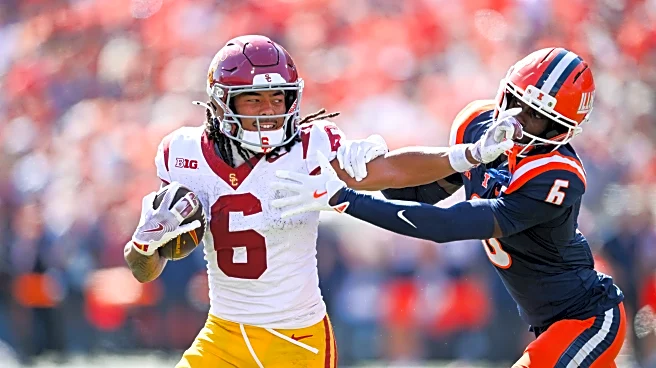What's Happening?
The NCAA Division II football playoffs for 2025 have commenced, featuring 32 teams competing for the national championship. Ferris State, the defending champion, is a strong contender, aiming for its fourth
title in five years. Harding, which won the championship in 2023, is also a top seed alongside Kutztown and Albany State. The playoffs will unfold over five weeks, culminating in the championship game in McKinney, Texas. The first round of matches is scheduled for November 22, with games being streamed live on ESPN+. The championship game will be broadcast on ESPN2 and available for streaming via Fubo.
Why It's Important?
The NCAA Division II football playoffs are significant as they showcase emerging talent and provide a platform for schools outside the Division I spotlight. Ferris State's dominance in recent years highlights the competitive nature of Division II football. The playoffs offer exposure to players and schools, potentially impacting recruitment and funding. For fans and stakeholders, the event is an opportunity to engage with college football at a different level, emphasizing community and school spirit. The playoffs also contribute to the local economies of host cities through tourism and related activities.
What's Next?
As the playoffs progress, teams will be reseeded for the semifinals, ensuring competitive matchups. The championship game on December 20 will determine the national champion, with Ferris State and Harding as favorites. Stakeholders, including schools and sponsors, will closely monitor the outcomes, which could influence future investments in athletic programs. Fans can expect intense competition and potential upsets as teams vie for the title. The playoffs will continue to be a focal point for college football enthusiasts, with ongoing coverage and analysis.
Beyond the Headlines
The Division II playoffs highlight the broader landscape of college athletics, where schools balance sports with academics. The event underscores the importance of sports in fostering community identity and pride. It also raises questions about the allocation of resources between athletic and academic programs. The success of teams like Ferris State and Harding may inspire other schools to invest more in their athletic departments, potentially shifting the dynamics of college sports funding and priorities.












